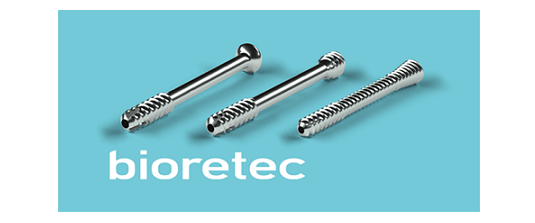NEW YORK, Aug. 14, 2024 /PRNewswire/ — The global cementless total knee arthroplasty market size is estimated to grow by USD 4.60 billion from 2024-2028, according to Technavio. The market is estimated to grow at a CAGR of 30.08% during the forecast period. Rising number of people diagnosed with arthritis is driving market growth, with a trend towards increasing number of outpatient knee replacement surgeries. However, high cost of cementless tka poses a challenge. Key market players include Aesculap Implants Systems LLC, Allegra Orthopaedics Ltd., B.Braun SE, Beijing Chunlizhengda Medical Instruments Co. Ltd., C2F Implants, Conformis Inc., Corin Group Plc, DJO Global Inc., Euromed Implants GmbH, Exactech Inc., GROUP FH ORTHO, Johnson and Johnson Services Inc., Medacta International SA, MicroPort Scientific Corp., Smith and Nephew plc, Stryker Corp., Symbios Orthopedie SA, United Orthopedic Corp., Waldemar Link GmbH and Co. KG, and Zimmer Biomet Holdings Inc..
Get a detailed analysis on regions, market segments, customer landscape, and companies- View the snapshot of this report
| Cementless Total Knee Arthroplasty Market Scope | |
| Report Coverage | Details |
| Base year | 2023 |
| Historic period | 2018 – 2022 |
| Forecast period | 2024-2028 |
| Growth momentum & CAGR | Accelerate at a CAGR of 30.08% |
| Market growth 2024-2028 | USD 4602 million |
| Market structure | Fragmented |
| YoY growth 2022-2023 (%) | 23.21 |
| Regional analysis | North America, Europe, Asia, and Rest of World (ROW) |
| Performing market contribution | North America at 40% |
| Key countries | US, Germany, UK, France, and Italy |
| Key companies profiled | Aesculap Implants Systems LLC, Allegra Orthopaedics Ltd., B.Braun SE, Beijing Chunlizhengda Medical Instruments Co. Ltd., C2F Implants, Conformis Inc., Corin Group Plc, DJO Global Inc., Euromed Implants GmbH, Exactech Inc., GROUP FH ORTHO, Johnson and Johnson Services Inc., Medacta International SA, MicroPort Scientific Corp., Smith and Nephew plc, Stryker Corp., Symbios Orthopedie SA, United Orthopedic Corp., Waldemar Link GmbH and Co. KG, and Zimmer Biomet Holdings Inc. |
Market Driver
The preference for outpatient knee replacement surgeries is on the rise due to several factors. Advancements in surgical techniques, implants, comprehensive blood management, multimodal pain management, and postoperative care management have made it possible for arthroplasty surgeons to perform these procedures without the need for extensive formal rehabilitation. Patients benefit from improved outcomes, such as reduced risk of infection and increased satisfaction from recovering at home. Outpatient knee replacement surgeries also result in decreased medical costs for patients. Additionally, end-users prefer outpatient orthopedic implantation procedures due to increased patient satisfaction and reduced costs to the healthcare system. The Centers for Medicare and Medicaid Services (CMS) have proposed adding total knee replacement (TKR) to the ASC covered procedures list in their 2020 outpatient and ASCs prospective payment system proposed rule. This development is expected to further boost the demand for outpatient knee implantation procedures. With more than 50% of knee replacement surgeries projected to be performed on an outpatient basis in the next decade, the global cementless total knee arthroplasty market is poised for significant growth.
The Cementless Total Knee Arthroplasty market is experiencing significant growth due to shifting patient preferences and cost considerations. Healthcare providers are increasingly opting for cementless fixation due to its advantages, such as improved osseointegration and faster recovery. However, the cost constraints and regulatory framework pose challenges. CE Mark certification and insurance coverage are crucial for market entry. Reimbursement policies and deductibles/copayments impact the affordability for patients. New technology, demographic changes, and lifestyle factors influence patient awareness and surgeon preferences. Regulatory oversight ensures safety and efficacy, while ongoing innovation addresses the lack of knowledge and trust in the market. Cementless implants, made of advanced materials, offer bone growth and address knee osteoarthritis, sports-related injuries, and tendon diseases. The elderly population and obesity further fuel market demand.
Discover 360° analysis of this market. For complete information, schedule your consultation – Book Here!
Market Challenges
- The cementless total knee arthroplasty market faces significant challenges due to the high cost of cementless implants and complex surgeries. In developed countries like the US, the average cost of a Total Knee Arthroplasty (TKA) is approximately USD50,000, which is a substantial financial burden for many patients. While US Medicare covers a significant portion of these costs, this benefit is not universally available. In contrast, countries like India and Thailand offer significantly lower TKA costs, but many residents cannot afford these procedures due to their low income and limited health insurance coverage. The advanced nature and complexity of cementless TKA compared to cemented implants further increase the procedure’s cost, acting as a limiting factor for the global cementless total knee arthroplasty market and hindering its growth during the forecast period.
- The Cementless Total Knee Arthroplasty market faces several challenges in the use of cementless fixation for knee implants. Osseointegration, the process of bone growth onto implant surfaces, is crucial for implant stability. However, it can be unpredictable and time-consuming. The choice of fixation materials and implant design plays a significant role in successful osseointegration. Knee osteoarthritis, sports-related injuries, tendon diseases, and the elderly population with obesity are common indications for knee replacement surgeries. Cementless knees offer benefits such as faster recovery and improved patient mobility. However, complications like implant instability and long-term outcomes require further clinical studies. Leading players in the market include DePuy Synthes ATTUNE and Persona OsseoTi. Their implants use materials like ceramics and alloys in mobile and fixed bearings. Hospitals and FDA clearance are essential for market entry. The aging population and the prevalence of osteoarthritis present significant opportunities for growth. Despite these challenges, surgeons and patients continue to seek the advantages of cementless knee arthroplasty.
For more insights on driver and challenges – Request a sample report!
Segment Overview
This cementless total knee arthroplasty market report extensively covers market segmentation by
- Product
- 1.1 Fixed-bearing
- 1.2 Mobile-bearing
- End-user
- 2.1 Hospitals
- 2.2 Orthopedic clinics
- 2.3 Ambulatory surgical centers
- Geography
- 3.1 North America
- 3.2 Europe
- 3.3 Asia
- 3.4 Rest of World (ROW)
1.1 Fixed-bearing- The cementless total knee arthroplasty (TKA) market includes both fixed-bearing and mobile-bearing implant designs. In fixed-bearing TKA implants, the plastic spacer is permanently attached to the tibial component. This design’s simplicity and lower cost make it popular among generic knee implant vendors for price-sensitive consumers. However, wear and tear on the polyethylene spacer is a concern. Manufacturers are addressing this issue through the use of wear-resistant polyethylene and improved component locking mechanisms. Researchers have developed highly cross-linked polyethylene, reducing oxidation and surface wear. Despite these advancements, fixed-bearing TKA implants face competition from mobile-bearing implants. However, their widespread use and affordability will drive market growth during the forecast period.
For more information on market segmentation with geographical analysis including forecast (2024-2028) and historic data (2017-2021) – Download a Sample Report
Research Analysis
Cementless Total Knee Arthroplasty (TKA) is a surgical procedure where a damaged knee is replaced with a prosthesis using cementless fixation. This method relies on osseointegration between the implant and bone, eliminating the need for bone cement. The use of cementless fixation materials allows for better implant stability and promotes natural bone growth. Indications for cementless TKA include knee osteoarthritis, sports-related injuries, tendon diseases, and the elderly population. Obesity and complications from previous knee replacement surgeries are also common reasons for this procedure. Clinical studies suggest that cementless TKA offers better long-term outcomes and benefits, including reduced knee pain, improved function, and reduced disability. However, surgical methods and implant design play a crucial role in ensuring successful osseointegration. The Centers for Disease Control and Prevention reports that over 700,000 knee replacement surgeries are performed annually in the US alone. Despite its advantages, cementless TKA comes with risks, including potential complications such as implant loosening and infection.
Market Research Overview
Cementless Total Knee Arthroplasty (TKA) is a surgical procedure where implants are fixed directly to the bone without the use of cement. This approach promotes osseointegration, allowing for better implant stability and long-term outcomes. Knee osteoarthritis, sports-related injuries, tendon diseases, and the elderly population are common indications for TKA. Implant design and materials, such as ceramics and alloys, play a crucial role in the success of cementless TKA. Surgical methods and implant stability are key considerations for surgeons and patients. Complications, including implant loosening and bone growth issues, can arise but are generally fewer with cementless fixation. Clinical studies and long-term outcomes demonstrate the benefits of cementless TKA in reducing knee pain and disability, improving patient mobility, and enhancing quality of life. Cost considerations, regulatory frameworks, and insurance coverage are important factors in the adoption of cementless TKA. The ongoing innovation in materials, implant design, and surgical techniques continues to drive the growth of the cementless TKA market.
Table of Contents:
1 Executive Summary
2 Market Landscape
3 Market Sizing
4 Historic Market Size
5 Five Forces Analysis
6 Market Segmentation
- Product
- Fixed-bearing
- Mobile-bearing
- End-user
- Hospitals
- Orthopedic Clinics
- Ambulatory Surgical Centers
- Geography
- North America
- Europe
- Asia
- Rest Of World (ROW)
7 Customer Landscape
8 Geographic Landscape
9 Drivers, Challenges, and Trends
10 Company Landscape
11 Company Analysis
12 Appendix
About Technavio
Technavio is a leading global technology research and advisory company. Their research and analysis focuses on emerging market trends and provides actionable insights to help businesses identify market opportunities and develop effective strategies to optimize their market positions.
With over 500 specialized analysts, Technavio’s report library consists of more than 17,000 reports and counting, covering 800 technologies, spanning across 50 countries. Their client base consists of enterprises of all sizes, including more than 100 Fortune 500 companies. This growing client base relies on Technavio’s comprehensive coverage, extensive research, and actionable market insights to identify opportunities in existing and potential markets and assess their competitive positions within changing market scenarios.
Contacts
Technavio Research
Jesse Maida
Media & Marketing Executive
US: +1 844 364 1100
UK: +44 203 893 3200
Email: media@technavio.com
Website: www.technavio.com/
SOURCE Technavio









